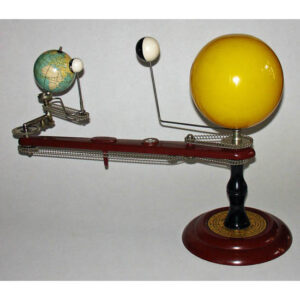Description
The Hamburg American Line and North German Lloyd were two different German ocean liner and shipping companies formed in the 19th century that had various joint operations beginning in the 1930s. Based on an extant travel brochure advertising joint “Far East Service” of both companies — undated but from about the mid 1950s to the 1960s — the sign is possibly from that period. Indeed, the brochure contains an illustration similar in form to the offered sign (eight-spoked ship wheel, but showing routes on a map in the center instead of flags). The offered wooden sign has fairly heavy outdoor wear; it perhaps was used at a passenger terminal or boarding area for the companies.
The Hamburg American Line was founded in 1847 in Hamburg, Germany, and ran ocean liners between Hamburg and the United States. It was alternately known as Hamburg-Amerikanische Packetfahrt-Actien-Gesellschaft or the acronym HAPAG. North German Lloyd was established in Bremen, Germany, in 1857, and also operated transatlantic routes. It was alternately known as Norddeutscher Lloyd or NDL. Both were leading shipping companies, carrying passengers in ocean liners across the Atlantic to U.S. ports, and eventually to other ports around the world.
The worldwide economic slump of the Great Depression resulted in financial hardships in the international shipping business. Consequently, in 1930, Hapag and NDL formed a cooperative relationship known as the Hapag-Lloyd Union to operate more efficiently. Although they retained their individual company identities, services and activities were combined. The two companies thereafter had a complex history of joint services and cooperation largely affected by political turmoil in Germany in the 1930s, World War II, and the partial decline of the ocean liner business thereafter. They formally merged as Hapag-Lloyd AG in 1970, still in business today as one of the world’s largest shipping companies mostly focusing on freight.
Condition: Generally very good for a utilitarian sign for outdoor use, with the usual overall toning, wear, weathering to the wood and paint. Painted decoration partially restored.
References:
“Far East Service, North German Lloyd, Hamburg-American Line.” Undated travel brochure, c. 1955 to mid 1960s.
“Hamburg America Line.” Wikipedia. 12 May 2016. https://en.wikipedia.org/wiki/Hamburg_America_Line (26 July 2016).
“Hapag-Lloyd AG.” Reference for Business. 2016. http://www.referenceforbusiness.com/history2/15/HAPAG-LLOYD-AG.html (27 July 2016).
“Norddeutscher Lloyd.” Wikipedia. 6 June 2016. https://en.wikipedia.org/wiki/Norddeutscher_Lloyd (26 July 2016).



![Isaac F. Pheils Map of the World with U. S. Supplement [Map Clock]](https://www.georgeglazer.com/wpmain/wp-content/uploads/2016/12/pheils-clock-map-300x300.jpg)


